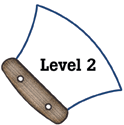
Alaska Science
Key Element D5
A student who meets the content standard should participate in reasoned discussions of public policy related to scientific innovation and proposed technological solutions to problems.
 |
Alaska Science A student who meets the content standard should participate in reasoned discussions of public policy related to scientific innovation and proposed technological solutions to problems. |
|
Performance Standard Level 2, Ages 8–10
|
|
|
|
Sample Assessment Ideas
|
Standards Cross-References
|
||
|
National Science Education Standards The potential for accidents and the existence of hazards imposes the need for injury prevention. Safe living involves the development and use of safety precautions and the recognition of risk in personal decisions. Injury prevention has personal and social dimensions. (Page 168) Human activities also can induce hazards through resource acquisition, urban growth, land-use decisions, and waste disposal. Such activities can accelerate many natural changes. (Page 168) Science influences society through its knowledge and world view. Scientific knowledge and the procedures used by scientists influence the way many individuals in society think about themselves, others and the environment. The effect of science on society is neither entirely beneficial nor entirely detrimental. (Page 169) |
Benchmarks Any invention is likely to lead to other inventions. Once an invention exists, people are likely to think up ways of using it that were never imagined at first. (Page 54) Transportation, communication, nutrition, sanitation, health care, entertainment, and other technologies give large numbers of people today the goods and services that once were luxuries enjoyed only by the wealthy. These benefits are not equally available to everyone. (Page 54) Technologies often have drawbacks as well as benefits. A technology that helps some people or organisms may hurt others—either deliberately (as weapons can) or inadvertently (as pesticides can). When harm occurs or seems likely, choices have to be made or new solutions found. (Page 55) Because of their ability to invent tools and processes, people have an enormous effect on the lives of other living things. (Page 55) |
|
Table of Contents | Return to Alaska Native Knowledge Network